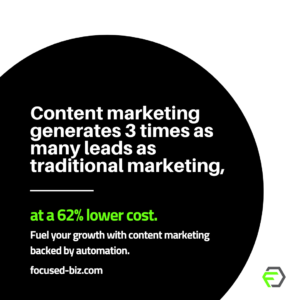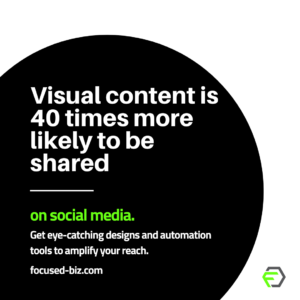Understanding the Value of Repurposing Content
Understanding the Importance of Repurposing Content
How can you start maximizing your content? Reuse-Recycle! Repurposing content refers to the process of taking existing content and adapting it for use in different formats or on different platforms. As a professional writer, you may spend a significant amount of time creating well-researched and engaging blog posts. However, simply publishing a blog post and moving on to the next one means that you may not be maximizing the potential reach and impact of your content.
By repurposing your content, you can extend its lifespan and reach a broader audience. This approach allows you to extract the most value from your original work while saving time and effort in creating entirely new content.
The Benefits of Repurposing Content
Repurposing content offers several benefits that can enhance your content marketing strategy. One major advantage is that it allows you to reach new audiences and expand your online presence. By adapting your blog post into different formats, such as social media posts, infographics, videos, or podcasts, you can tailor your content to suit the preferences and habits of various target audiences. This helps you to maximize your chances of attracting and engaging with different segments of your target market.
Another benefit of repurposing content is improved search engine optimization (SEO). By utilizing different formats and platforms, you can increase the visibility of your content across various channels, leading to more backlinks and a higher likelihood of being discovered by search engines. Additionally, when you repurpose content, you have the opportunity to optimize it for different keywords and long-tail phrases, further boosting its SEO performance.
Repurposing content also allows you to reinforce key messages and concepts. By presenting your ideas in different formats, you can emphasize important points, provide additional context, or elaborate on specific aspects. This repetition and reinforcement can help drive home your message and increase audience understanding and retention.
How Repurposing Content Saves Time and Effort
One of the most significant advantages of repurposing content is that it saves you time and effort in content creation. Creating new, original content can be time-consuming and resource-intensive, requiring extensive research, writing, editing, and promoting. However, by repurposing your existing blog post, you already have a solid foundation to work with.
Instead of starting from scratch, you can leverage the research and ideas from your original post, adapting and repackaging them for different formats and platforms. This not only reduces the amount of time spent on content creation but also ensures consistency across your various content channels.
Furthermore, repurposing content allows you to extend the lifespan of your content marketing efforts. Rather than publishing a single blog post and moving on to the next, you can create a continuous stream of content by repurposing and reposting different versions of your original work. This helps to keep your content fresh and relevant, while also maximizing its potential reach and impact.
In conclusion, understanding the value of repurposing content is essential for maximizing the effectiveness of your content marketing strategy. By reaching new audiences, improving SEO, reinforcing key messages, and saving time and effort, repurposing content can significantly enhance your online presence and engagement.

Breaking Down Your Blog Post into Smaller Parts
Divide your post into key points
When breaking down your blog post into smaller parts, it is helpful to start by identifying the key points or main ideas that you want to convey. These are the most important pieces of information that you want your readers to take away from your post. By dividing your post into these key points, you can ensure that each part focuses on a specific aspect of your topic, making it easier for readers to digest and understand.
Create separate sections or paragraphs
Once you have identified the key points of your blog post, it’s time to create separate sections or paragraphs for each point. This helps to organize your content in a logical manner and allows readers to navigate through your post easily. Each section or paragraph should focus on one key point and provide supporting details or examples to further explain or elaborate on that point.
Use subheadings to guide readers
Subheadings are an effective way to break down your blog post into smaller parts and make it more reader-friendly. By using descriptive and engaging subheadings, you can guide your readers through your content and give them a clear idea of what each section is about. Subheadings also help readers to quickly scan your post and find the information they are most interested in. Make sure to use subheadings that accurately reflect the content of each section and entice readers to continue reading.

Crafting Engaging Social Media Captions and Graphics
Creating Captivating Social Media Captions
Crafting engaging social media captions is essential for capturing your audience’s attention and enticing them to interact with your content. Here are some tips to help you create captivating captions for your social media posts:
1. Keep it concise: Due to the limited character count on most social media platforms, it’s important to keep your captions short and to the point. Grab your audience’s attention with a catchy opening line or question.
2. Use relevant hashtags: Including relevant hashtags in your captions can help increase the visibility of your posts and make them more discoverable by users who are interested in the topic you’re discussing.
3. Be authentic and relatable: Authenticity is key when it comes to engaging your audience. Use a conversational tone that resonates with your target demographic and be genuine in your messaging.
4. Encourage engagement: Encourage your followers to engage with your posts by asking questions, requesting their opinions, or inviting them to share their own experiences related to the topic you’re discussing. This will not only boost engagement but also help create a sense of community around your brand.
Crafting Eye-Catching Graphics
In addition to compelling captions, incorporating eye-catching graphics into your social media posts can greatly enhance their visual appeal and engagement. Here are some tips for creating graphics that stand out:
1. Use high-quality images: Ensure your images are of high resolution and visually appealing. Blurry or pixelated images can deter users from engaging with your posts.
2. Incorporate your brand elements: Consistency in branding is crucial for building a recognizable identity. Incorporate your logo, brand colors, and other visual elements that reflect your brand’s personality into your graphics.
3. Utilize typography effectively: Choose fonts that are easy to read and align with your brand image. Experiment with different font sizes, styles, and colors to make key messages stand out.
4. Add visual elements: Use icons, illustrations, or infographics to visually enhance your graphics and convey information in an engaging way. Visual elements can help break up text and make your posts more visually appealing.
5. Optimize for different platforms: Consider the requirements and specifications of different social media platforms when creating graphics. For example, ensure that the dimensions of your graphics are suitable for each platform to avoid cropping or distortion.
By combining captivating captions with eye-catching graphics, you can maximize the impact of your social media posts and effectively engage your audience. Experiment with different strategies and monitor the response to find what works best for your brand.

Scheduling Your Social Media Content Calendar
Creating a Social Media Content Calendar
A social media content calendar is an essential tool for organizing and scheduling your posts across different platforms. It helps you plan your content in advance, ensures consistency in your messaging, and maximizes the impact of your blog post. To create a social media content calendar, follow these steps:
Identify Key Dates and Themes
Start by identifying key dates, holidays, or events that are relevant to your blog post. These can be national holidays, industry-specific events, or even recurring themes that align with your content. By incorporating these into your content calendar, you can leverage the existing buzz or relevancy surrounding these dates to engage your audience.
Determine Posting Frequency and Time Slots
Next, determine how often you want to post on each social media platform. Consider your audience’s preferences and engagement patterns to identify the optimal posting frequency. Once you have determined the number of posts per week, allocate time slots for each platform to ensure consistent coverage throughout the month. This way, your audience will know when to expect your content and can engage with it accordingly.
Develop Engaging and Complementary Content
When filling in your content calendar, develop engaging and complementary content that supports your blog post. This can include snippets or quotes from your article, behind-the-scenes looks, infographics, videos, or user-generated content. The goal is to provide a variety of content types that resonate with your audience and promote your blog post effectively.
Utilize Social Media Scheduling Tools
To streamline the process and save time, consider using social media scheduling tools. These tools allow you to schedule your posts in advance and automatically publish them at your desired date and time. Some popular scheduling tools include Hootsuite, Buffer, and Sprout Social. They offer features such as content libraries, analytics, and the ability to manage multiple social media accounts in one place.
Monitor and Optimize Performance
Once your social media content calendar is in action, regularly monitor the performance of your posts to gauge engagement and adjust your strategy if needed. Track metrics such as likes, comments, shares, and clicks to determine which types of content resonate best with your audience. Use this data to optimize your future posts and continuously improve your social media strategy.
By following these steps and utilizing a social media content calendar, you can effectively maximize the reach and impact of your blog post by converting it into a month’s worth of engaging social media content.
Measuring Success and Iterating for Improvement
Measuring Performance with Analytics
To effectively convert one blog post into a month’s worth of social media posts, it is crucial to measure the success of your content. Analytics tools can provide valuable insights into the performance of your blog post and subsequent social media posts. By tracking metrics such as page views, engagement rate, click-through rate, and conversion rate, you can gain a better understanding of how well your content is resonating with your audience.
Google Analytics is a popular and powerful tool that can help you track various metrics related to your blog post. By setting up the appropriate tracking codes and goals, you can monitor the traffic, bounce rate, and average time spent on your blog post. Additionally, social media platforms like Facebook and Twitter offer their own analytics tools that allow you to track metrics specific to your social media posts.
Gathering Feedback and Insights
In addition to analyzing metrics, gathering feedback from your audience can provide valuable insights for improvement. Encourage readers to leave comments on your blog post, social media posts, or send direct messages with their thoughts and opinions. Actively engaging with your audience and listening to their feedback can help you identify areas of improvement or topics that resonate well with them.
You can also utilize surveys or polls to gather more structured feedback from your audience. Tools like Google Forms or SurveyMonkey make it easy to create and distribute surveys to your audience. Ask questions about the quality of your content, the clarity of your messaging, or any suggestions they might have for future topics.
Iterating and Improving Your Content
Based on the insights gained from analytics and feedback, it is important to continuously iterate and improve your content. Look for patterns in the data and feedback to identify any areas where your content might be falling short. Are there specific sections of your blog post that receive less engagement? Are there certain social media platforms where your content is not performing well? Use this information to make data-driven decisions and optimize your content accordingly.
Consider repurposing your blog post into different formats such as infographics, videos, or podcasts to reach a wider audience. Experiment with different headlines, visuals, and calls-to-action in your social media posts to see what resonates best with your audience. By making iterative improvements based on feedback and analytics, you can maximize the impact of your content and generate even more engagement on social media platforms.

